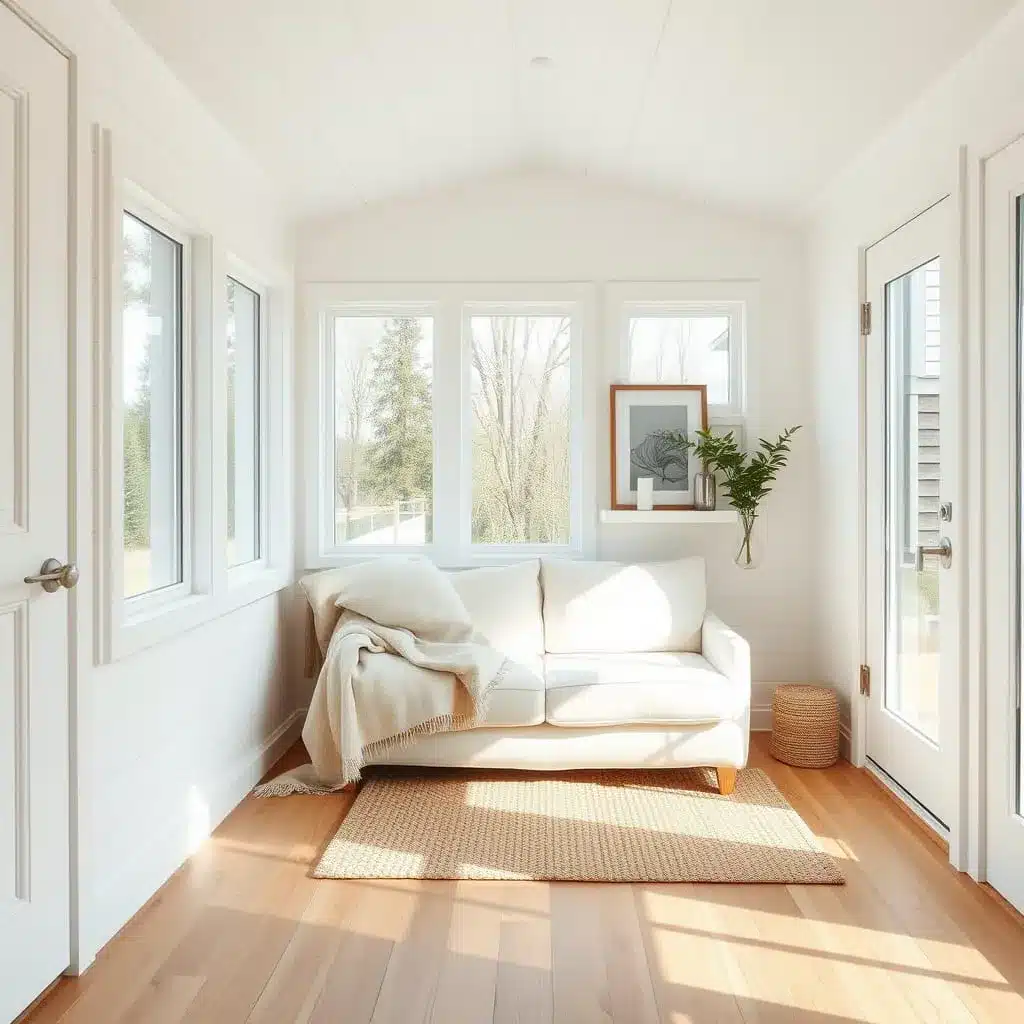
Let’s Be Real— A Tiny House Interior Can Suck If You Don’t Plan It Right
Ever walk into a tiny house and feel like you’re stuck in a fancy broom closet? I’ve been there. You think, “This is supposed to feel cozy, not claustrophobic.” That’s the fine line with any tiny house interior. It can either feel like an Instagram dream or like you’re hoarding in a shoebox.
I’m going to walk you through what actually works—what makes a tiny space livable, breathable, and dare I say… damn good-looking.
🔑 Key Takeaways Table
| Tip | What It Solves | My Quick Take |
|---|---|---|
| Use neutral color palettes | Makes the space feel bigger | White walls = cheat code for square footage |
| Go vertical | Adds storage without eating floor space | If it doesn’t hang, it better hide |
| Multipurpose furniture | Saves space, boosts function | Your table should moonlight as a desk or a bed |
| Smart lighting | Makes it airy, not dungeon-y | Natural light is free, use it |
| Kill clutter with storage hacks | Keeps your sanity intact | Every drawer, bin, and shelf better work overtime |
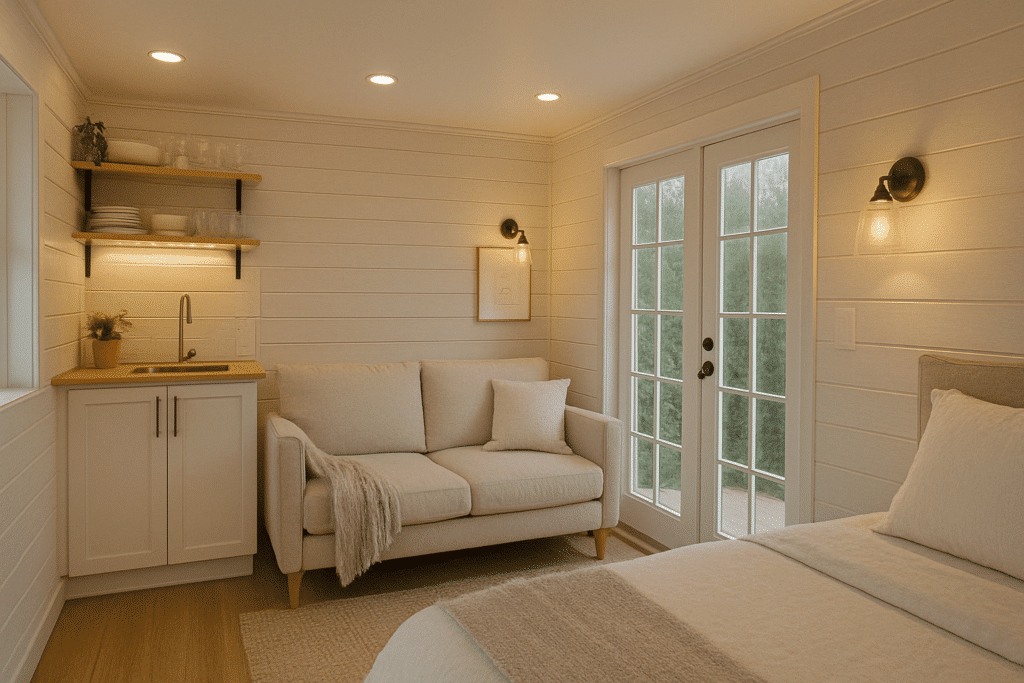
Tiny House Interior Rule #1: Light Colors Are Your Best Friend
My first tiny house mistake? Dark navy walls. Looked cool on Pinterest. Felt like a submarine in real life.
Want your space to feel bigger? Stick to white, cream, light gray, or soft beige. These tones reflect light and instantly make everything feel more open. I painted everything white, then layered in natural textures—linen curtains, woven baskets, a few reclaimed wood accents. Clean, calm, and zero regrets.
Pro Tip: Paint the ceiling the same color as the walls. It erases those hard lines and makes everything feel taller.
Zone Your Space With Rugs, Not Walls
Walls are greedy. They steal square footage. So I ditched them.
Instead, I used area rugs to create visual zones. My sleeping nook has a vintage Turkish runner. The “living room”—aka a loveseat and side table—sits on a jute rug. The rugs do all the heavy lifting without adding any bulk.
If you need more definition, use curtains or lightweight room dividers. IKEA has some great panel systems that mount to the ceiling. Looks intentional, not cheap.
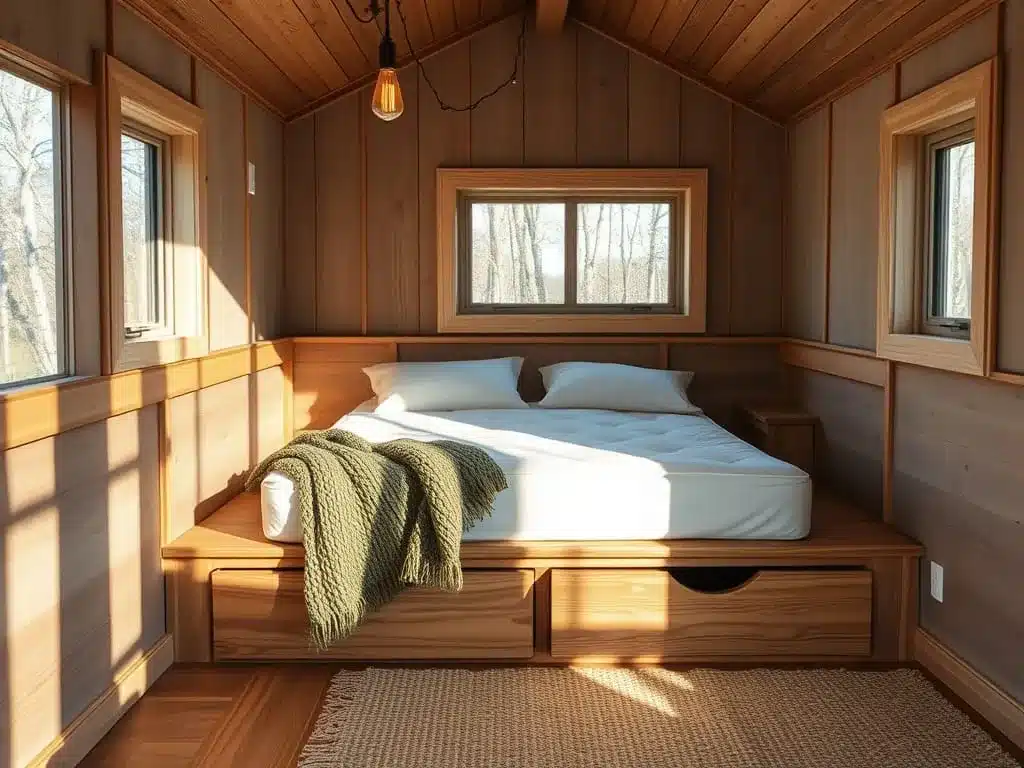
Tiny House Interior Storage = Survival
You don’t need more stuff. You need better places to put it.
Here’s where I stashed 80% of my life:
- Under-bed drawers for clothes and shoes
- Staircases with pull-out compartments
- Toe-kick drawers under kitchen cabinets
- Flip-top bench seating in the dining area
- Wall-mounted baskets for daily items like mail, keys, and notebooks
Think of it this way: If it opens, it should store something.
Furniture That Works Overtime In a Tiny House Interior
If your couch can’t do anything but sit there, it’s fired.
In a tiny house interior, furniture has to earn its keep. My favorite pieces:
- A fold-down desk that disappears when I need yoga space
- A Murphy bed with hidden shelving on the back
- Ottomans with storage inside
- Convertible table that serves as a work surface, dining area, and hobby zone
Everything in my tiny house does two jobs minimum. If it doesn’t? It’s not coming in.
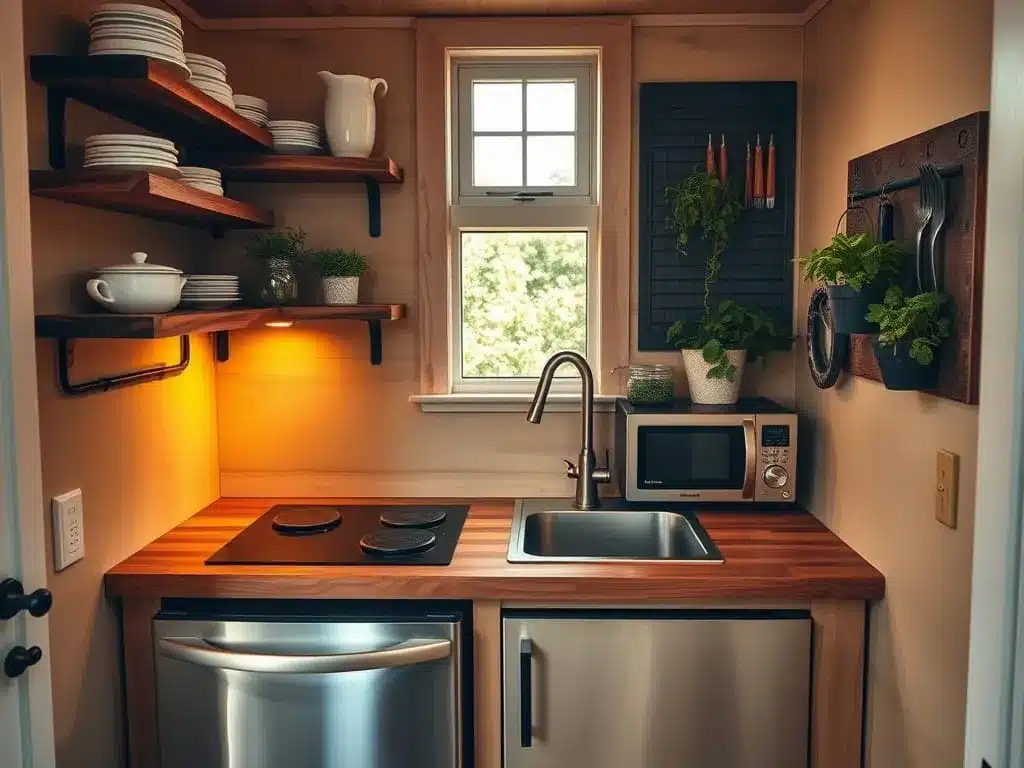
Let’s Talk Kitchens: The Heart of the Tiny House Interior
Tiny house kitchens can either look like Barbie’s Dreamhouse or a chef’s bunker. I found the sweet spot.
Here’s how I nailed it:
- Mini appliances only — 2-burner cooktop, under-counter fridge, combo microwave/convection oven
- Open shelves up top, deep drawers below—no upper cabinets eating up headroom
- Pull-out pantry that slides into a 6” wide gap
- Magnetic knife strip instead of a block
- Hooks for everything—spoons, mugs, towels, you name it
Also, I skipped the dishwasher. Just be honest with yourself—are you cooking for 12?
Tiny Home Interior Lighting Makes or Breaks It
If your tiny house interior feels dark, it feels cramped. Period.
I maxed out on natural light—think: big windows, French doors, and a skylight over the loft. Then I layered in:
- Overhead LED pot lights
- Under-cabinet lighting in the kitchen
- Wall sconces by the bed (plug-in, no wiring mess)
- Warm white bulbs only—none of that surgical cold blue stuff
Light = space. Use it like paint.
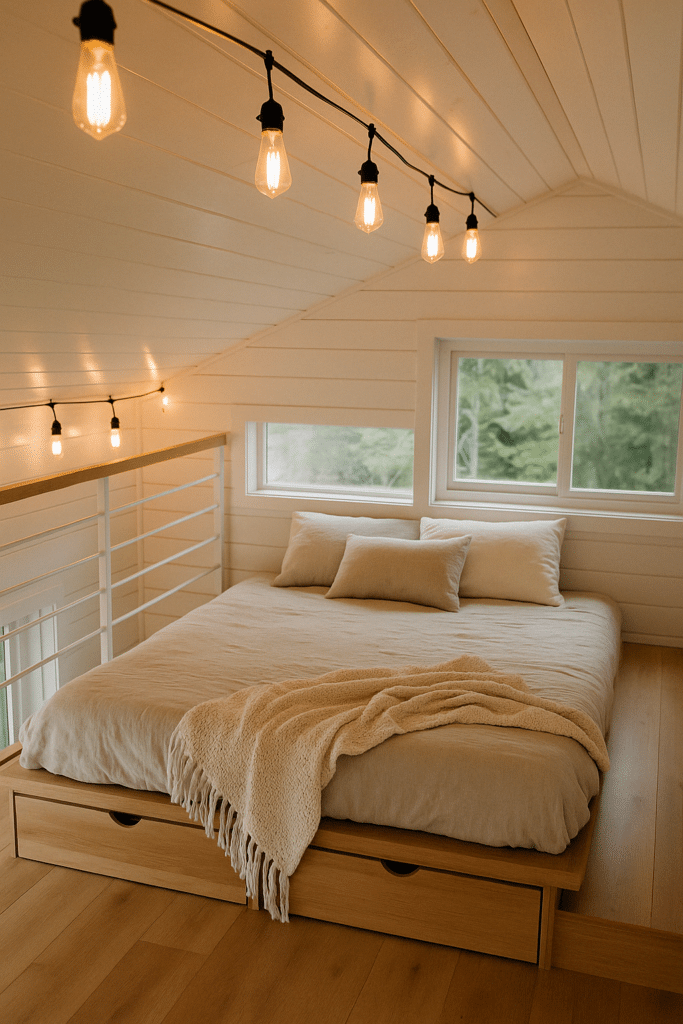
My Loft: Where Sleep Meets Storage
Lofts can feel like crawling into a dryer—or like a cozy nook in the clouds. The difference? Height and airflow.
Here’s what worked for me:
- Max headroom—build the loft above kitchen or bathroom zones, not your main living area
- Open railing instead of solid walls so air and light flow
- Low-profile mattress on a platform base with storage
- Small fan to keep air circulating
- Ladder with built-in bookshelves because yes, even that needs to work double-duty
If stairs are more your speed, build drawers into each step. I’ve seen people store a whole wardrobe in their staircase.
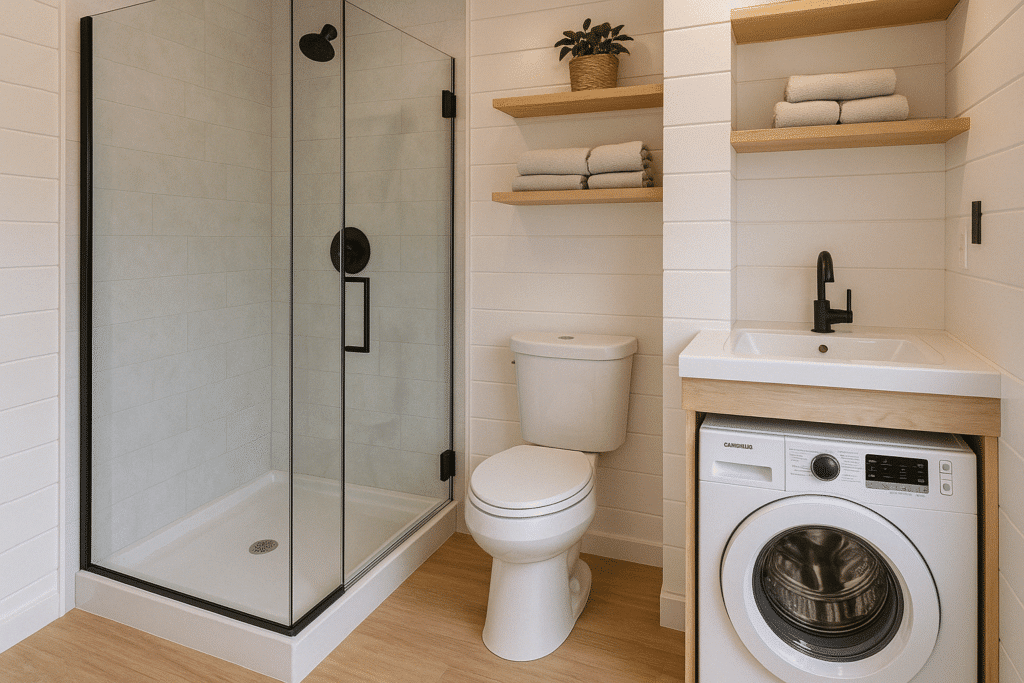
The Bathroom: Tight but Functional
Yes, you can fit a full bathroom into a tiny house interior. It just needs to be smart.
Mine includes:
- Corner shower with glass doors
- Compact RV-style toilet (some go composting, I went with a flush model and tank)
- Combo washer/dryer under the vanity
- Wall-mounted sink faucet to save counter space
- Towel hooks and open shelves instead of a bulky cabinet
Would I lounge in there with a glass of wine? No. But I’m clean, it works, and it looks good.
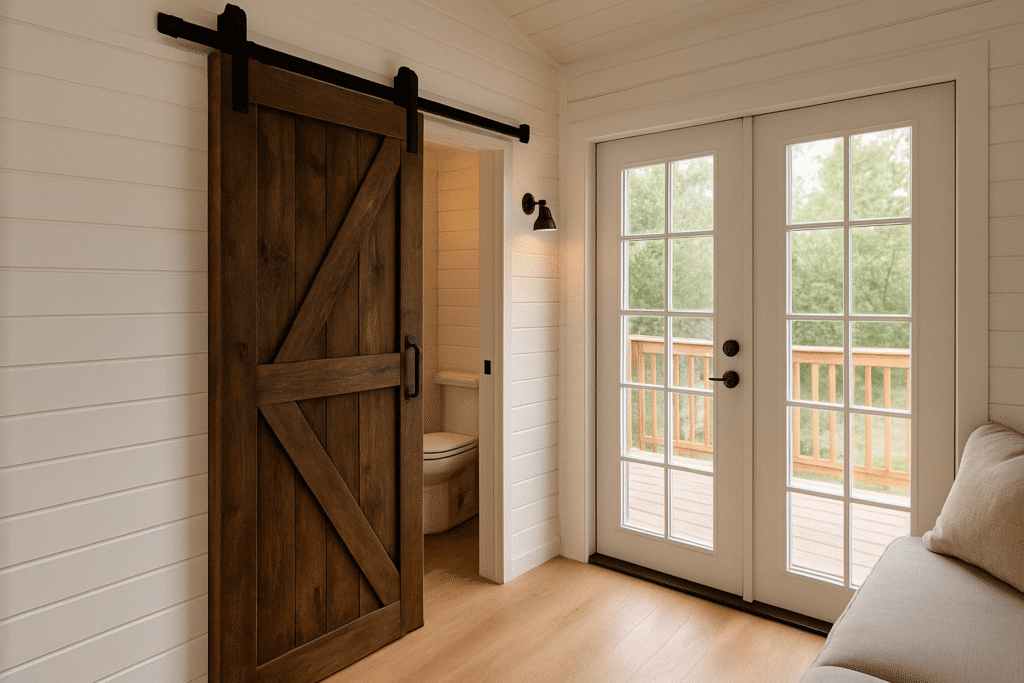
Doors Matter More Than You Think In a Tiny Home Interior
Traditional swing doors are a no-go. They steal too much room.
My swaps:
- Barn door on a track for the bathroom
- Pocket door for the bedroom nook
- French doors to the outside deck to open things up visually
Even the loft got a roll-up privacy screen instead of a door. It weighs nothing and gives me that “closed off” feeling without the bulk.
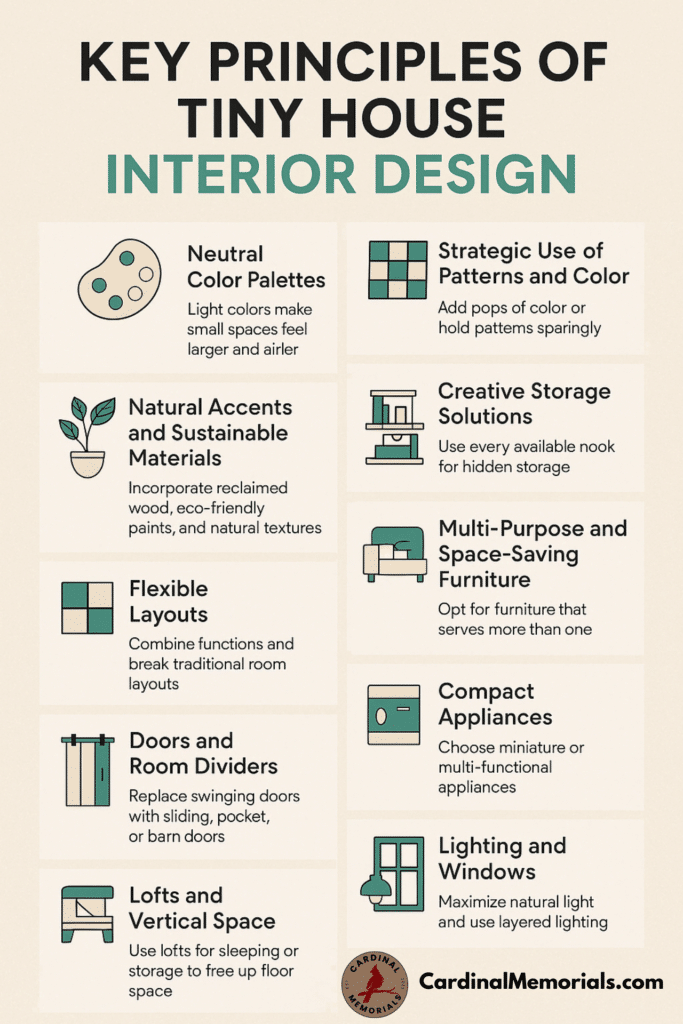
Real Questions People Ask Me (A Lot)
Can a tiny house really feel comfortable?
Yes—but only if you plan it. Comfort in a tiny house interior comes from layout, light, and letting go of clutter.
Do I have to build custom furniture?
No, but it helps. IKEA, Wayfair, and Amazon have a surprising amount of foldable, multipurpose furniture that fits tiny dimensions.
Is loft living annoying?
It can be. If you’re not mobile or hate climbing, design a downstairs sleeping space. Or build your loft with stairs instead of a ladder.
Where do guests sleep?
Mine crash on a fold-out couch with built-in drawers. You could also try a Murphy bed or even a stowable floor mattress.
How do I deal with limited storage?
Use walls, stairs, benches, and dead corners. If a space isn’t storing something, you’re wasting it.
Final Word on Your Tiny House Interior Design & Layout
Here’s what it all comes down to: make every inch count. If your tiny house interior isn’t working for you, it’s probably working against you.
There’s no magic formula—but there is strategy. Go vertical. Double the purpose of everything. Keep it light, simple, and smart.
Small doesn’t have to mean cramped. Done right, a tiny house interior can feel bigger than your old two-bedroom ever did.
And yeah—I’d live in mine all over again.
